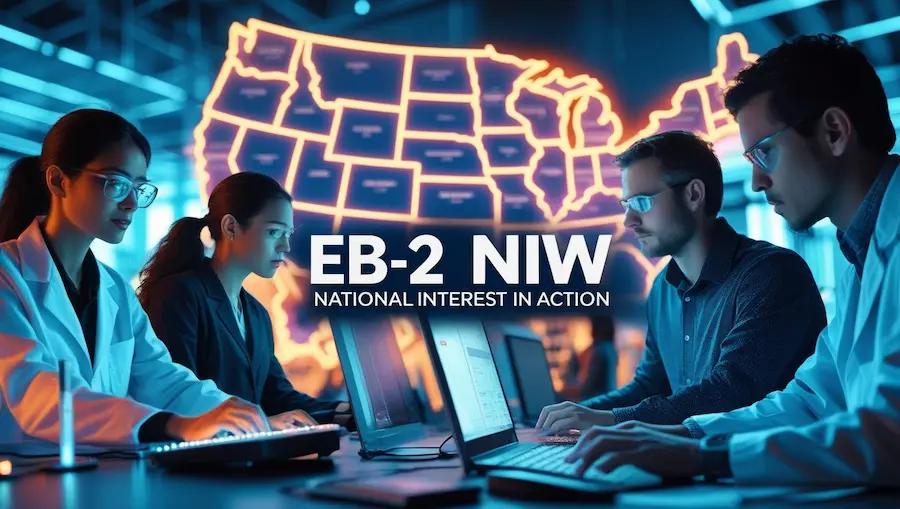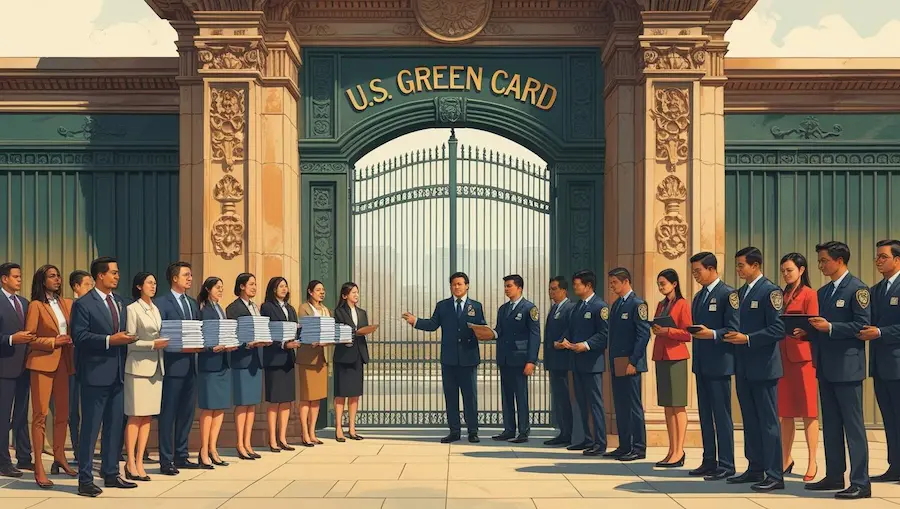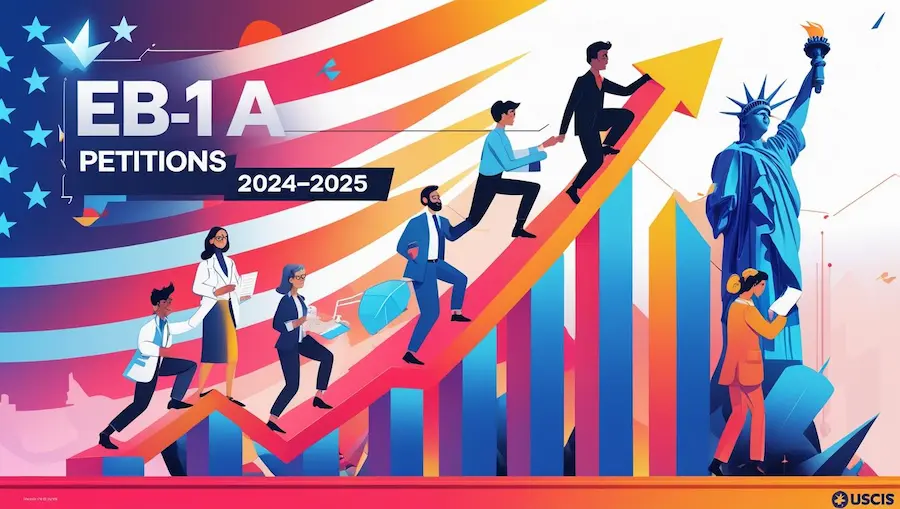If you’re eyeing a U.S. green card through the EB-1A (Extraordinary Ability) or EB-2 NIW (National Interest Waiver) routes, you’ve probably noticed the landscape is shifting—fast. As someone who’s helped hundreds of clients navigate these waters, we want to break down what’s *actually* going on, why it’s happening, and what you can do to maximize your chances in 2025. we’ll keep it real, cite the latest data, and share the kind of practical advice we give our own clients.
—
The EB-1A Boom: Why Is Everyone Suddenly Applying?
Let’s start with the headline: EB-1A petitions are exploding. In the first quarter of fiscal year 2025 (October–December 2024), USCIS received 7,338 EB-1A petitions—a whopping 56% jump from the previous quarter. That’s not a typo. It’s one of the sharpest quarter-over-quarter increases we’ve seen in years.
Why the surge?
A few reasons. First, EB-1A lets you self-petition—no need for a U.S. employer to sponsor you. That’s a huge draw for researchers, entrepreneurs, and anyone tired of waiting in the endless EB-2 or H-1B lines. Second, USCIS recently clarified what counts as “extraordinary ability,” making the process a bit less mysterious and, for some, more approachable. And it’s not just EB-1A. Total EB-1 filings (which also include multinational execs and outstanding professors) topped 13,000 in Q1 FY25—well above pre-pandemic levels. Read this immigration blog for the latest updates, tips and guidelines to smoothen your immigration journey.
—
The Catch: Approval Rates Are Dropping
Here’s the not-so-great news: approval rates are down. In FY 2024, the EB-1A approval rate was 60.65%, down from 70.5% the year before. Denials are up (23.32%), and about 16% of cases are still pending.
What’s going on? USCIS is getting stricter. More applications mean more scrutiny, and the agency has made it clear they’re not rubber-stamping anything. The new guidance clarifies what counts as evidence—team awards now count under the “lesser nationally or internationally recognized prizes” criterion, and even past memberships in professional associations can help. But don’t let the numbers scare you. If you prepare well and align your achievements with what USCIS wants to see—think high-impact publications, major awards, and clear leadership roles—you’re still in the game.
—
Indian Applicants: A Quiet Success Story
Here’s something you might not hear elsewhere: Indian applicants are quietly crushing it. While the overall approval rate is around 60%, Indian applicants are seeing rates as high as 90%—largely because they tend to over-prepare, document everything meticulously, and often come from fields like tech and academia where “extraordinary ability” is easier to demonstrate.
—

EB-2 NIW: The National Interest Waiver Rollercoaster
Now, let’s talk about the EB-2 NIW. This category has always been a favorite for folks who don’t quite meet the EB-1A bar but are doing work that’s important to the U.S. national interest—think STEM, healthcare, renewable energy, and so on.
But here’s the shocker:
The approval rate for EB-2 NIW petitions has plummeted to about 43% in FY 2024. That’s a massive drop from the 90%+ approval rates we saw just a few years ago. Denials are up (18%), and a staggering 39% of cases are still pending..
—
Why the Drop? Backlogs, Scrutiny, and Policy Shifts
There are two big reasons for this:
1. Backlogs: The number of EB-2 NIW applications has skyrocketed, leading to a huge pileup of pending cases. More people are applying, hoping to bypass the long waits in other categories, but USCIS simply can’t keep up.
2. Increased Scrutiny: USCIS is looking much more closely at whether applicants really have an advanced degree (plus five years’ experience) or truly “exceptional ability.” They’re also scrutinizing the three prongs of the National Interest Waiver more than ever before.
—
What’s New in USCIS Guidance?
USCIS has updated its policy manual to clarify how it evaluates EB-2 NIW cases. The new guidance spells out how they decide if your occupation is a “profession,” how your exceptional ability relates to your proposed work, and how they weigh evidence like letters of support and business plans. If you’re in a STEM field—artificial intelligence, cybersecurity, renewable energy, biotech—you’re in luck. USCIS has made it clear they’re prioritizing these areas.
—

What Does This Mean for You? (Practical Advice)
1. Don’t Panic—But Don’t Wing It.
Yes, approval rates are down, but that just means you need to be more strategic. For EB-1A, focus on quality over quantity: high-impact publications, major awards, and clear evidence of leadership. For EB-2 NIW, make sure your work clearly serves the U.S. national interest and that you meet the advanced degree or exceptional ability requirements.
2. Documentation Is Everything.
USCIS wants to see hard evidence. For EB-1A, that means proof of awards, publications, media coverage, and leadership roles. For EB-2 NIW, you need strong letters of support, a detailed business plan (if relevant), and a clear explanation of how your work benefits the U.S..
3. Stay on Top of Policy Changes.
USCIS guidance is evolving. What worked last year might not work this year. Make sure you’re up to date on the latest criteria and expectations. If you’re not sure, talk to someone who lives and breathes this stuff.
4. Be Patient.
Backlogs are real, especially for EB-2 NIW. Even if your case is strong, it might take longer than you’d like. Plan accordingly.
5. Consider Premium Processing (If You Can Afford It).
For some categories, premium processing can speed things up. It’s not cheap, but if time is of the essence, it might be worth it.
—
The Bottom Line: Is It Still Worth Applying?
Absolutely—if you have a strong case and you’re willing to put in the work. The U.S. is still looking for top talent, especially in STEM and other high-impact fields. But the days of “good enough” applications are over. You need to be strategic, thorough, and proactive.
If you’re not sure where you stand, get a professional assessment. A good immigration consultant (yes, shameless plug) can help you figure out your strengths, spot any gaps, and put together a winning application.
—
Final Thoughts (And a Bit of Encouragement)
Look, the U.S. immigration system is always changing. Sometimes it feels like a moving target. But if you’re doing work that matters—whether you’re a scientist, entrepreneur, artist, or engineer—there’s still a path forward. The key is to know the rules, play to your strengths, and never underestimate the power of a well-prepared application.
If you’re ready to take the next step, or just want to talk through your options, let’s connect. The journey might be tough, but you don’t have to go it alone.

